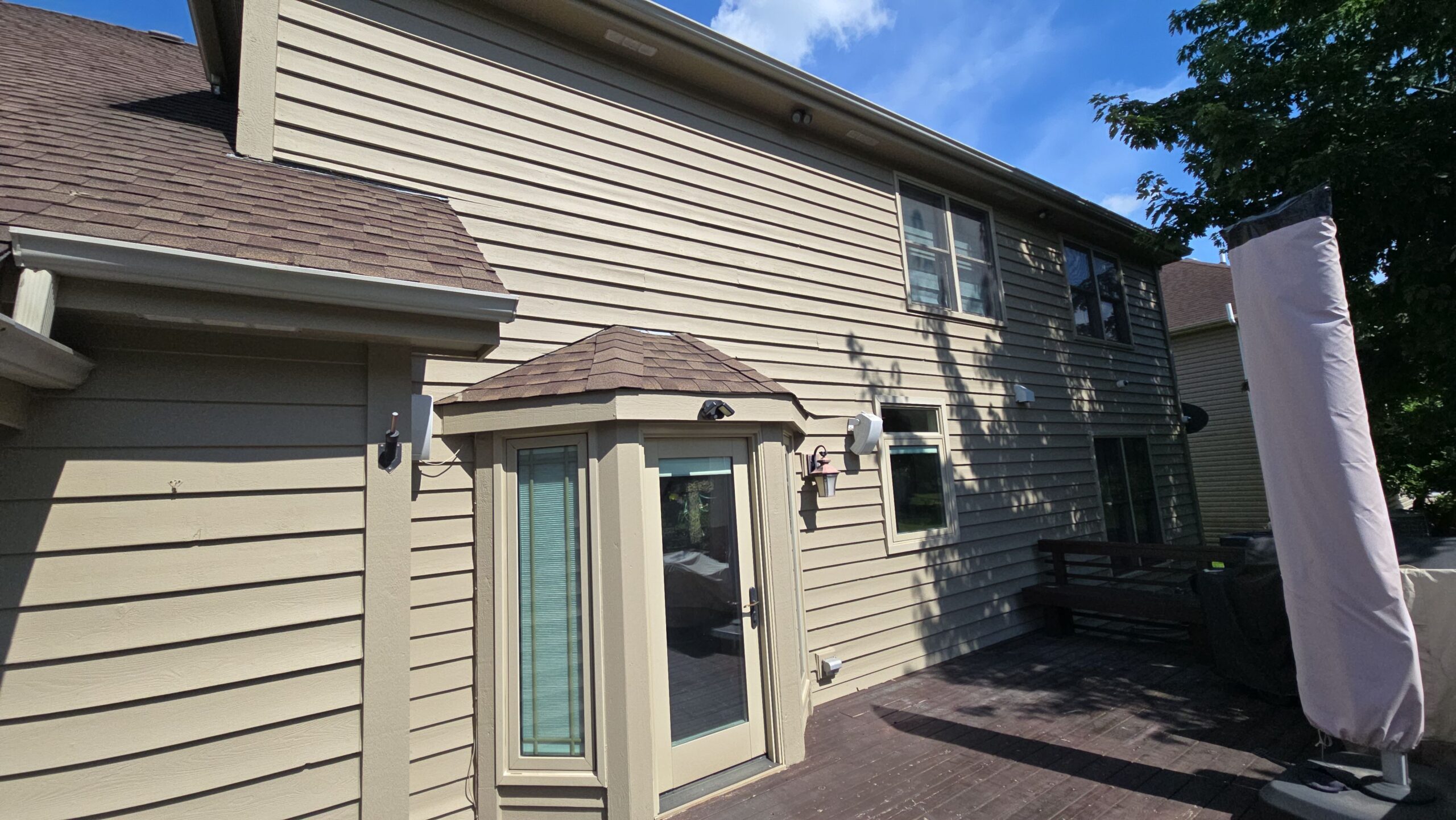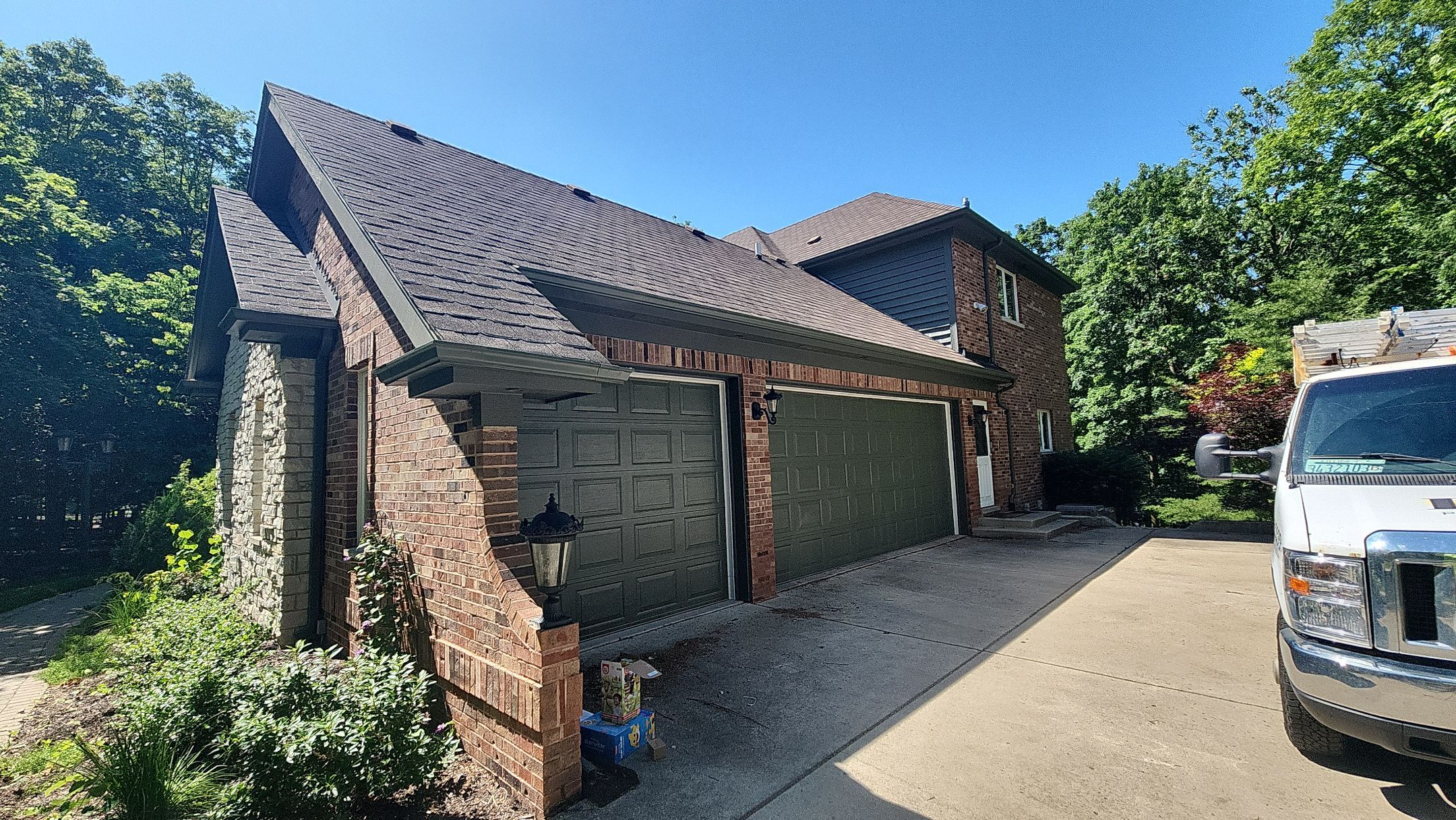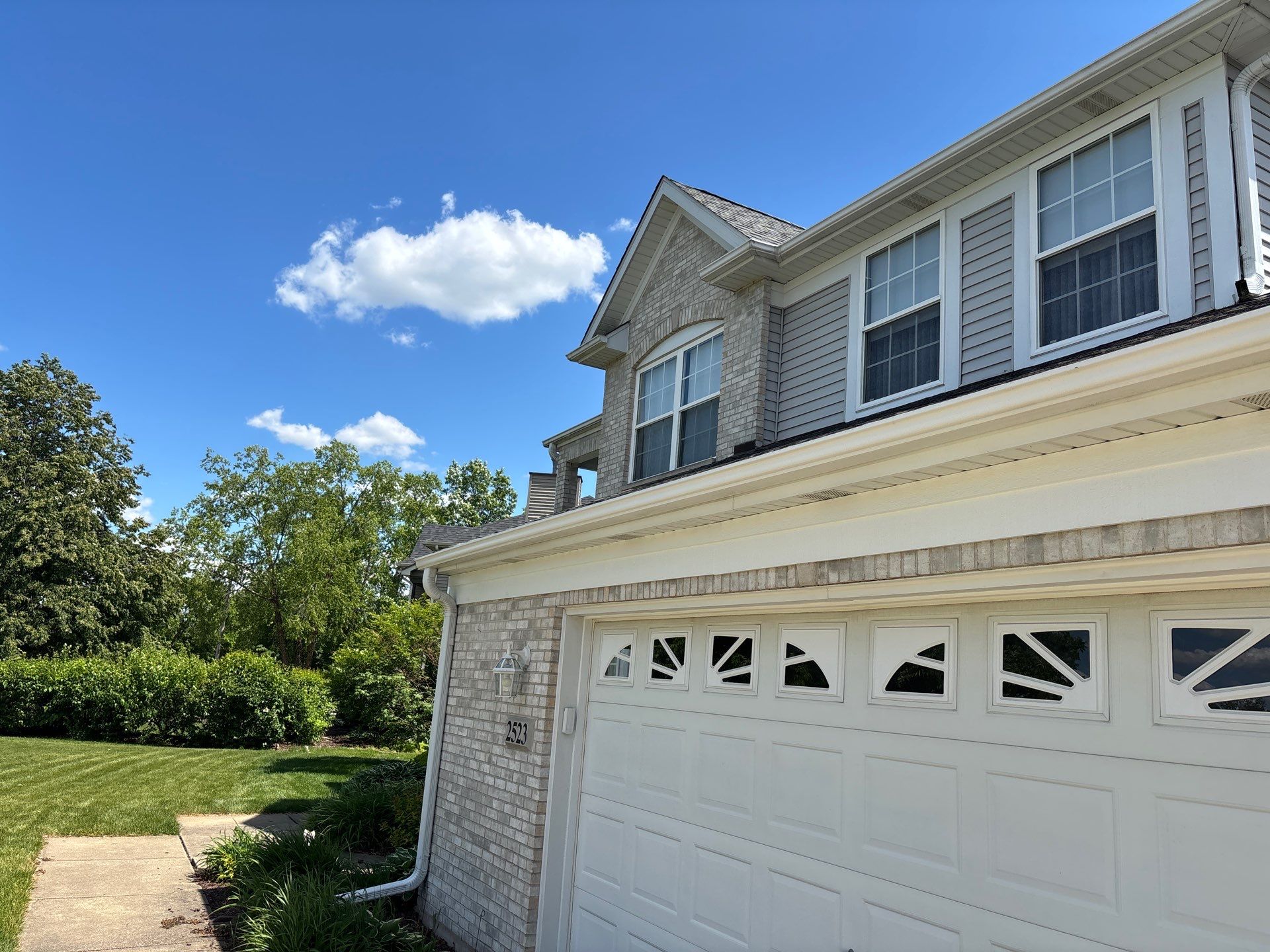Exterior paint doesn’t just add color—it acts as a flexible barrier that protects your home from harsh weather and continuous temperature changes. When done correctly, a high-performance paint job helps resist the damage caused by thermal expansion and contraction—a silent, daily process that gradually breaks down rigid coatings.
As exterior surfaces heat up under the sun, they expand. When temperatures fall, they contract. This movement stresses the paint film. If the paint lacks the ability to flex with these subtle shifts, it begins to crack, peel, or blister.
Paint systems that survive and perform well under this stress share one key trait: flexibility. Whether through acrylic resins, elastomeric binders, or smart application methods, these coatings stretch and return to shape without losing adhesion. This article explains how that works—backed by product data, field experience, and environmental science.
What Is Thermal Expansion and Contraction?

Basic Physics
All materials expand when heated and contract when cooled. It’s a fundamental principle of physics. Building materials—including wood, vinyl, metal, stucco, and fiber cement—are no exception. These daily fluctuations are amplified by weather extremes, solar exposure, and humidity changes.
Thermal expansion can be minor but still significant. For instance:
-
Wood siding may expand or shrink up to ¼ inch over 12 feet of wall length.
-
Vinyl siding is more reactive—its expansion coefficient is among the highest of residential building materials.
-
Stucco and concrete move less, but become stressed during freeze-thaw cycles as trapped moisture freezes and expands.
Over time, these thermal expansions and contractions stress the outermost layer of the structure—the paint film.
Rigid Paint Films and Failure Risk
Rigid, brittle paint cannot adapt to thermal movement. As the substrate beneath it expands or contracts, the paint cracks at corners, joints, or across wide walls. Failures occur faster in areas that see constant UV exposure or wide daily temperature swings—like south- and west-facing elevations. Without elasticity, paint loses its bond and begins to flake, peel, or chalk.
How High-Quality Paint Resists Thermal Movement
Flexible Resins
Paint chemistry has evolved to accommodate movement. Today’s best exterior paints use resins designed to flex, stretch, and recover.
-
100% acrylic binders remain soft and elastic even in cold weather.
-
Urethane-modified acrylics offer increased adhesion and abrasion resistance with movement.
-
Elastomeric binders, found in masonry coatings, can elongate multiple times their original size without tearing.
The paint film created by these resins adheres tightly to the substrate while moving with it. That elasticity is critical to long-term performance.
Elastomeric Paints
Elastomeric coatings are the heavyweights of thermal expansion and contraction resistance. Originally developed for masonry and stucco, they’re now used in extreme climates and on cracked surfaces where flexibility is non-negotiable.
Elastomeric paint can stretch up to 400% of its original size and return to shape without losing adhesion. It also provides:
-
A seamless, waterproof membrane
-
UV resistance
-
Crack-bridging ability
Here are a few standout elastomeric products:
| Product | Use Case | Key Feature |
|---|---|---|
| Sherwin-Williams ConFlex XL® High Build | Stucco, masonry, tilt-up concrete | High crack-bridging, waterproof film |
| BEHR Premium Elastomeric Stucco & Masonry | Residential exterior masonry | 100% acrylic elastomeric base |
| PPG Permalast® | Commercial and institutional walls | UV stable, elongation >250% |
Paint Film Thickness Matters
Flexibility isn’t just chemistry—it’s also thickness. Paint must be applied at the correct wet film build to allow for movement. Too thin, and it tears; too thick, and it may not dry properly.
Professionals use wet film gauges during application to confirm that coatings meet the required spread rate—especially for elastomerics and urethane-modified coatings. Correct build enhances both movement tolerance and long-term durability.
Substrate-Specific Considerations
Different siding materials respond differently to heat, cold, and moisture—and require paint systems tailored to those reactions.
Wood Siding and Trim
Wood is highly dynamic. It expands with both heat and moisture and contracts when dry and cool. These shifts can pull at paint film from all directions.
Ideal paints:
-
Must adhere well to soft, fibrous surfaces
-
Should tolerate minor movement without breaking
-
Benefit from mildew resistance due to moisture absorption
Recommended products:
| Product | Type | Benefit |
|---|---|---|
| Benjamin Moore Aura® Exterior | 100% acrylic | Flexible, color-locking, mildew-resistant |
| Sherwin-Williams Duration® | Urethane-modified acrylic | Great adhesion, flexible, UV-resistant |
Fiber Cement Board
Fiber cement moves far less than wood but is prone to joint cracking and hairline surface movement. Paints for this surface need good adhesion and enough give to avoid splitting over seams or caulk lines.
Good candidates include:
-
Mid-flex acrylics that perform in variable humidity
-
UV-resistant formulas with dirt resistance
Recommended paints:
-
BEHR Marquee® Exterior
-
Dunn-Edwards Evershield®
Stucco and Masonry
Stucco surfaces often experience minor cracking from movement and shrinkage. In cold climates, freeze–thaw cycles can drive deeper damage. The ideal coating here is a high-build elastomeric that bridges cracks and allows vapor transmission.
Professional painters often:
-
Fill cracks with elastomeric patch
-
Prime with flexible masonry primers
-
Paint in dry, mild conditions
Metal and Aluminum
Metal expands and contracts rapidly with temperature changes. Paints used here must adhere tightly and flex without blistering.
Products should:
-
Contain corrosion inhibitors
-
Include flexible metal primers
-
Be UV-stable
Example system:
-
Sherwin-Williams DTM Acrylic Coating (Direct-to-metal, for steel, aluminum, galvanized)
Climate and Exposure Considerations

Geography matters. What works in a desert climate may fail in a coastal zone. Paint systems must be chosen to handle both the thermal expansion risks and environmental hazards unique to each region.
Hot Climates
High heat causes rapid surface expansion. UV exposure degrades weaker binders, especially in darker colors.
-
Use UV-stable acrylics or elastomerics
-
Favor light-reflective colors to reduce heat absorption
-
Apply paint early morning or late afternoon to avoid surface overheating
Cold and Snowy Climates
Freeze–thaw cycles are brutal. Moisture enters small gaps, freezes, expands, and breaks apart paint film and substrate.
-
Elastomeric coatings are a must
-
Proper caulking and crack patching critical before painting
-
Breathable films allow trapped moisture to escape
Coastal Regions
Salt air + wind + thermal cycles = accelerated wear. Salt can crystallize under paint films, forcing them to delaminate. Moisture retention from fog and humidity also exacerbates failure.
Coatings must be:
-
Waterproof yet breathable
-
Flexible to handle substrate movement
-
Resistant to salt and mildew
High Elevation Zones
UV radiation increases by about 4–6% for every 1,000 feet of elevation. With this comes more thermal cycling stress, especially on dark-colored walls.
-
Use premium paints with HALS (Hindered Amine Light Stabilizers)
-
Apply in controlled conditions with enough cure time
-
Include UV-blocking primers for added durability
How Professional Services Ensure Thermal Movement Resistance
Paint alone isn’t enough. How it’s applied—and what happens before it’s applied—greatly affects its ability to withstand thermal expansion and contraction.
Surface Prep Tailored to Movement Zones
-
Expansion joints and seams are caulked using high-performance sealants like Big Stretch® or Sikaflex®
-
Gaps and cracks are patched with compatible elastomeric compounds
-
Surfaces are cleaned and profiled for maximum paint grip
Film Thickness and Application Control
-
Crews use wet film thickness gauges
-
Application rates are calculated using spread rate tools
-
Sprayers and rollers are selected based on required mil build and substrate
Consistency ensures elasticity is distributed evenly across walls, corners, and trim.
Primer Compatibility
Many coatings fail prematurely due to incompatible primers. For example:
-
A rigid oil-based primer under a flexible acrylic topcoat can cause cracking
-
Moisture-blocking primers on masonry may prevent breathability
Each substrate requires a purpose-built primer that complements the elasticity of the finish coat.
Product Specification Based on Movement Risk
Professional painters select paints based on:
-
Substrate material (wood, fiber cement, masonry, metal)
-
Exposure direction (south and west need tougher coatings)
-
Local climate and weather volatility
Common Signs of Paint Failure from Thermal Expansion and Contraction

Early detection can prevent total coating failure. Watch for:
-
Hairline cracks across wide areas of wall or trim
-
Peeling at joints between materials or seams
-
Blistering or flaking on sun-exposed walls
-
Chalking, especially on upper elevations, where UV exposure is most intense
-
Water stains or damage after winter due to failed film at cracks or caulk joints
Tip: South- and west-facing walls usually fail first. Inspect these areas each spring and fall.
People Also Ask (FAQ)
Q1: What kind of paint resists cracking due to temperature changes?
Paints with flexible binders—like 100% acrylic or elastomeric coatings—resist cracking from thermal expansion. Elastomerics, in particular, can stretch multiple times their dry-film size without tearing.
Q2: Why does exterior paint peel in hot or cold weather?
Because siding or stucco expands and contracts. If the paint can’t stretch or grip through that cycle, it peels off—especially at joints and corners.
Q3: Do elastomeric paints really last longer in harsh climates?
Yes. They outlast standard paints because they flex, resist UV, and form a watertight film. With correct prep and application, they can last 10–12 years.
Q4: Can I use standard house paint on stucco or concrete?
Not advised. Stucco and concrete move differently and hold moisture. They require paints that are both breathable and flexible, which most standard paints are not.
Flexible Paints Are a Smart Investment
Thermal expansion isn’t something you see—but you will see the damage it causes if the wrong paint is used. Coatings that can’t stretch or recover with temperature changes will crack, peel, and fail—sometimes in just a couple of seasons.
The solution:
Use high-flex, UV-resistant, breathable exterior paints that are built to move with your home. Combine them with the right primers, joint sealants, and professional film thickness application to get a system that withstands climate, sun, and time.









